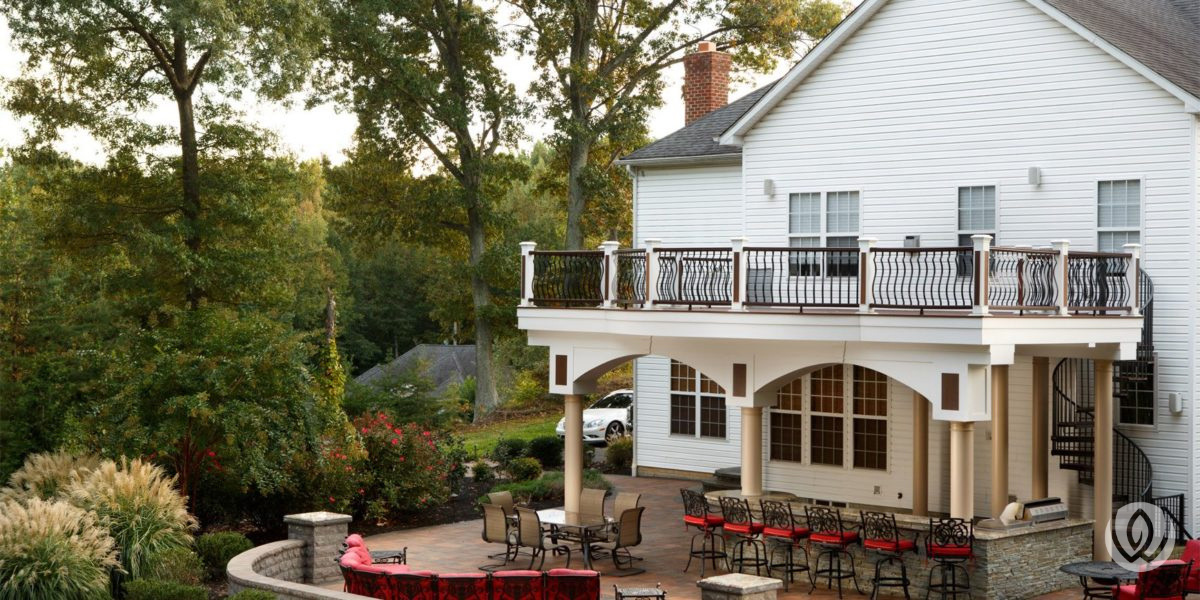
When it comes time to plan your next landscaping project, it helps to know what specific landscaping terms mean. Some of those terms will refer to the softer elements of your yard while others will apply to the hardscape features (which is one of the words listed below).
Knowing what these landscaping terms mean will help you make the best decisions so you can put a proper plan in place. And, getting familiar with them will help when it's time to talk with a landscape design and build firm.
Okay, so here's the list of 11 landscaping terms every homeowner must know:
These are the hard structures in a landscape like retaining walls, pergolas, decks, and pavers. These hard landscaping areas (that don't change over time) are often accompanied by plants and other live horticultural elements (that do change and grow over time) to soften the space and add balance to your landscape.
A deck is a raised structure that is typically made from wood or composite materials to give the appearance of wood. Many people enjoy relaxing on their deck or using it as an entertaining focal point.
A patio is an outdoor structure that's made using pavers, bricks, natural stone, or other hard materials. Though used in a similar manner to decks, patios are usually on level ground (not raised). They can also be installed on sloped areas, which will require the use of retaining walls. It's not unusual to see a patio under decks (a great way to use the space!) or as an extension of the home's entertaining space.
Pergolas are typically large outdoor structures (usually made of wood or vinyl) with a ventilated roof and open sides. Some homeowners opt to add drapery to the sides of their pergolas or fabric to the top for a bit of shade to create the “ceiling” space in an outdoor living room.
A retaining wall is a structure used to hold back soil and stabilize slopes. Many types of materials can be used to build a retaining wall, including rocks, boulders, pavers, and segmental wall products (as seen in paver catalogs). Though these walls serve a specific purpose (i.e., stopping soil erosion), they can be beautifully and creatively incorporated in your landscape.

When your landscape design and build company mentions "softscape," they are referring to elements of a landscape like plants, flowers, and shrubs. Adding a nice blend of soft and hard elements to your yard should be one of the main goals when planning and creating a design for your landscape.
An evergreen is a plant, tree, or shrub that stays green all year round. These trees and shrubs are nice to have in your landscape as they can typically withstand cold and harsh climates. They can also be used strategically as a privacy screen or an organic fence.
Also known as a bush, a shrub is smaller than a tree and has above-ground woody stems. Shrubs are often used as a foundation plant and can typically offer shelter and food for the birds in your neighborhood. Many shrubs are evergreen and will offer year-round color and interest to your landscape.
Annuals are flowering plants that only last for one season. So, why use annuals? Because they come in a variety of colors to complement your landscape and are very eye-catching, especially when planted in masses.
Here are a few popular annuals you may want to use in your landscape:

Perennials are typically smaller plants (when compared to shrubs and trees) used for splashes of color that generally go dormant in the winter, and come back in the spring, year after year. Don't forget that you can also pair them up with colorful annuals.
Here are a few popular perennials you may want to use in your landscape:
A layer of material that's applied on top of soil to retain moisture and reduce weed growth. Popular options include shredded hardwood mulch, cypress mulch, and cedar mulch.
